A fold can be recognised in the field when a surface shows direction, sense or dip angle variations. Folds are composed of an axial plane, a fold axis, limbs and a hinge line.
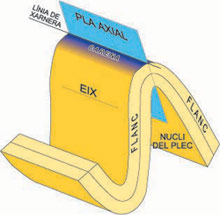
Depending on the shape of the surface, three different types of folds can be distinguished.
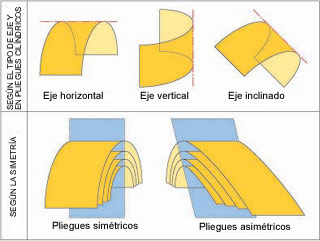
If we consider the simple case of an anticline and a syncline of horizontal axis and vertical axial plane, the geological map will show a symmetrical repetition of the different units at both sides of the fold axis.
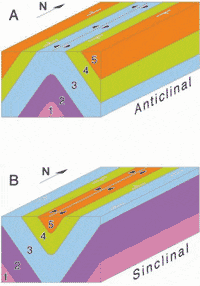

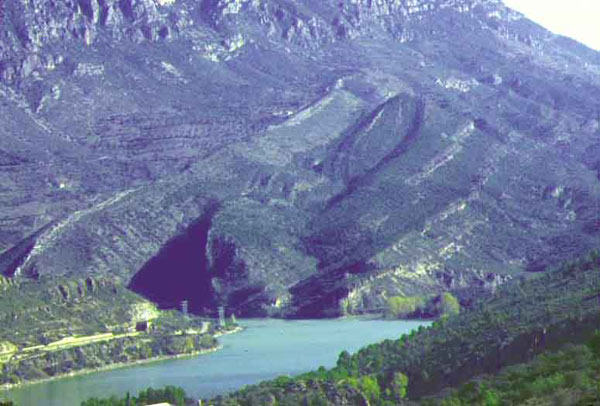
If you look at these structures following a direction that has a certain angle with the fold axis, you will notice which type of fold is. In each case the map will show a string of units symmetrically repeated from the imaginary line called fold axis.
You must know the age of each unit to say while following the map if that repetition belongs to an anticline or a syncline. If the oldest layers outcrop in the fold nucleus, they belong to an anticline. On the contrary, if in the nucleus outcrop the newest units it is a syncline.
If fold axis was not horizontal, the map would show symmetrical units related to the fold anyway but their path will close (periclinal ending) in the sense of fold dip or in the opposite depending on the type of the fold.

Geologic structures called faults can also cause maps with repeated geologic structures. Faults are plane surfaces so they can be characterized by the direction of dip and its angle.
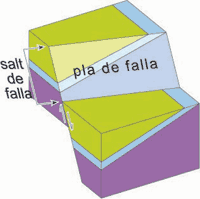
A fault is represented on the map with a line that can cross other lines and make a displacement or a repetition of some geologic units. Faults repetition is not symmetrical with respect to an imaginary line as happens in folds. Displacement causes its asymmetrical repetition with respect to the line that represents the fault plane. This is the fracture surface through which there has been displacement between the two blocks that have been separated.
Depending on the orientation of the fault plane and the sense of movement of the two blocks several types of faults can be distinguished.

A first distinction is based in the movement of a block with regard to the other one so we can talk about vertical or inclined plane faults or horizontal movement faults (A and B.) In these cases right slip faults (A) and left slip faults (B) can be differentiated. If the displacement is vertical (C and D) two types of faults can be distinguished: normal and reverse faults. Faults are called normal, dip-slip or down fault when the hangingwall block has moved downwards with regard to the footwall block, brought to a higher position due to the action of tensile stresses. Faults are reverse if fault planes dip towards the position of the hangingwall block. The best criterion to determine whether faults are normal or reverse is to check on a point of the fault plane if the material above is newer or older than the one under it. When a reverse fault has an angle of dip lower than 45º it is called thrust.

